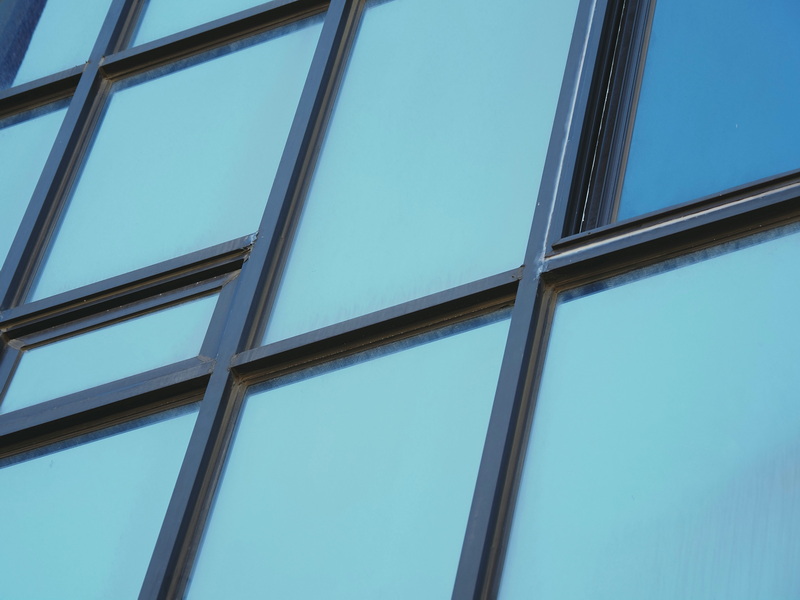English 




Views: 222 Author: Astin Publish Time: 2025-02-17 Origin: Site



Content Menu
● Understanding the Benefits of Aluminum Foil on Windows
● The Risks of Using Aluminum Foil on Windows
>> Fire Hazard
● Guidelines for Safe Use of Aluminum Foil
>> Avoid Direct Contact with Glass
● Alternatives to Aluminum Foil
>> Exterior Shutters or Awnings
● Environmental Considerations
>> Local Climate Considerations
>> Case Study 1
>> Case Study 2
>> Case Study 3
● FAQ
>> 1. Is it safe to cover windows with aluminum foil?
>> 2. Can aluminum foil help reduce energy costs?
>> 3. What type of aluminum foil should I use?
>> 4. How should I apply aluminum foil onto my windows?
Aluminum foil has long been a staple in kitchens around the world, primarily used for cooking and food preservation. However, in recent years, a unique application of aluminum foil has gained popularity among homeowners: using it as a window covering to reduce heat gain and improve energy efficiency. This article explores the safety and effectiveness of this practice, the potential risks involved, and alternative methods for achieving similar benefits without compromising window integrity.
Aluminum foil is known for its excellent reflective properties, reflecting approximately 90-96% of radiant heat. This makes it an effective barrier against solar radiation, which can significantly increase indoor temperatures during hot weather. When applied to windows, aluminum foil serves multiple purposes:

By reflecting sunlight away from the glass surface, aluminum foil helps keep indoor temperatures cooler in summer months. This can lead to reduced reliance on air conditioning systems and lower energy bills.
In winter, aluminum foil can be used to reflect indoor heat back into the room, minimizing heat loss through windows. This dual functionality makes it a versatile solution for year-round temperature control.
Compared to specialized window films or treatments, aluminum foil is inexpensive and readily available at most grocery stores.
Aluminum foil can block light effectively, providing privacy while controlling light levels in a room.
For renters or those looking for a temporary solution, aluminum foil can be easily applied and removed without permanent alterations to the windows.
By reducing the amount of heat entering or escaping through windows, aluminum foil can contribute to overall energy efficiency in a home. This is particularly important in regions with extreme temperatures.
While not as effective as specialized films, aluminum foil can provide some level of UV protection for furniture and flooring by blocking harmful rays that cause fading over time.
Despite its benefits, using aluminum foil on windows is not without risks. One of the primary concerns is the potential to void window warranties. Many window manufacturers specify that using aftermarket products—such as aluminum foil—can nullify warranty coverage due to the risk of damage to the glass. This is particularly relevant because:
Aluminum foil reflects heat but can also cause thermal stress on window panes. If the glass overheats due to trapped heat, it may crack or shatter.
While functional, aluminum foil is not visually appealing and may detract from the overall appearance of a home.
Prolonged exposure to high temperatures can lead to damage not only to the windows but also to surrounding areas if not monitored properly.
The application of aluminum foil may lead to increased condensation between the glass panes in double-glazed windows, which can promote mold growth and other moisture-related problems.
Aluminum foil can degrade over time when exposed to outdoor elements like wind and rain, leading to peeling or flaking that necessitates frequent replacement.
In rare cases, if aluminum foil is placed too close to a heat source or if it becomes crinkled and creates sharp edges, it could pose a fire hazard.
If you decide to use aluminum foil on your windows, there are several guidelines you should follow to minimize risks:
For optimal results, apply aluminum foil on the outside of windows rather than inside. This prevents heat from entering through the glass and causing thermal stress.
Thicker varieties of aluminum foil provide better insulation and durability against outdoor elements compared to standard kitchen-grade foil.
For enhanced insulation, consider layering aluminum foil with other materials like cardboard or Styrofoam before applying it to windows. This additional layer can help absorb any heat that penetrates through.
Regularly check the condition of both the aluminum foil and your windows to ensure that no damage occurs over time.
If you are concerned about potential damage or warranty issues, consider using reflective window films or thermal curtains that provide similar benefits without compromising aesthetics or risking glass damage.
To minimize thermal stress on your windows, avoid placing aluminum foil directly against the glass surface; instead, use spacers or frames if necessary.
If using aluminum foil as a temporary solution during extreme weather conditions, limit its use duration and remove it once normal conditions resume.

While aluminum foil can be an effective solution for some homeowners, there are numerous alternatives that provide similar benefits without some of the associated risks:
These films are designed specifically for windows and come in various styles and levels of reflectivity. They offer UV protection while allowing natural light into your home without compromising aesthetics.
Heavy drapes made from insulating materials can help regulate indoor temperatures by blocking heat in the summer and retaining warmth in winter months.
These shades trap air within their honeycomb structure, providing excellent insulation against temperature fluctuations while allowing light control.
Installing exterior shutters or awnings can effectively block sunlight before it reaches your windows while adding aesthetic value to your home's exterior design.
These kits typically include plastic film that can be adhered directly over window frames during colder months, creating an additional barrier against drafts while being easy to install and remove as needed.
Advanced technologies such as electrochromic glass allow homeowners to change their window tint dynamically based on sunlight exposure and temperature changes throughout the day.
These inserts fit snugly within existing window frames and provide an additional layer of insulation without permanently altering your windows' appearance.
Using aluminum foil raises environmental questions as well. While it may offer short-term energy savings, consider how often you will need to replace it due to wear and tear or aesthetic concerns:
Aluminum is recyclable; however, many people do not recycle used aluminum foil properly due to food residue contamination from cooking applications.
Opting for long-term solutions like reflective films or thermal curtains may contribute more positively toward sustainable living practices than frequently replacing disposable materials like aluminum foil.
When considering alternatives, look for products with energy efficiency ratings that indicate their effectiveness in reducing energy consumption over time while enhancing comfort levels within your home environment.
Depending on where you live—whether in a hot desert climate or a cold northern region—certain solutions may be more effective than others at addressing specific temperature challenges throughout different seasons.
Evaluating products based on their entire life cycle—from production through disposal—can help homeowners make informed decisions regarding energy efficiency upgrades versus temporary fixes like aluminum foil applications that may have limited long-term benefits overall.
To further illustrate the effectiveness of using aluminum foil versus other methods for managing indoor temperatures effectively:
A family living in Phoenix installed reflective window films instead of using aluminum foil during summer months; they reported a 30% reduction in cooling costs compared with previous years when they relied solely on traditional blinds alone.
A homeowner in Minnesota used insulated window inserts alongside thermal curtains during winter months; they observed significant reductions in heating bills while maintaining comfortable indoor temperatures without compromising aesthetics.
In contrast, another family attempted using aluminum foil temporarily during extreme heat waves but experienced issues with condensation buildup leading them ultimately back toward investing in more permanent solutions like external shading devices instead after noticing damage occurring around their double-glazed units over time due largely from thermal stress caused by improper installation techniques initially employed earlier on their part when applying said material incorrectly against glass surfaces directly instead of following recommended guidelines outlined above previously mentioned here within this article itself overall too!
Using aluminum foil on windows can be an effective way to manage indoor temperatures and reduce energy costs; however, it comes with certain risks that must be carefully considered before implementation begins at all times consistently across different scenarios encountered regularly throughout varying climates experienced globally today too! The potential for voiding warranties along with causing thermal stress should not be overlooked either way ultimately either way altogether overall too! Homeowners should weigh these factors against their desire for energy efficiency while exploring safer alternatives if necessary whenever possible moving forward into future endeavors undertaken consistently across various situations encountered regularly throughout varying climates experienced globally today too!
Ultimately speaking now here today—whether you choose aluminum foil versus another method entirely depends upon specific needs faced along with budget constraints alongside aesthetic preferences desired ultimately by each individual homeowner involved here today too! By understanding both advantages versus disadvantages associated with each option available out there today—you'll be able make informed decisions best suited toward living environments ensuring safety alongside efficiency maintained within homes everywhere around us all together now moving forward into future endeavors undertaken consistently across different scenarios encountered regularly throughout varying climates experienced globally today too!

Yes, it is generally safe if applied correctly; however, it may void window warranties due to potential damage caused by improper installation techniques utilized improperly against glass surfaces directly instead following recommended guidelines outlined above previously mentioned here within this article itself overall too!
Yes! By reflecting sunlight away from windows during summertime while retaining warmth inside during wintertime—it can effectively lower overall utility bills incurred throughout various seasons experienced regularly across different climates faced globally today too!
Heavy-duty or thicker varieties are recommended for better insulation alongside durability compared against standard kitchen-grade options available out there today!
For best results achieved overall—apply it onto exterior side facing outwardly towards sunlight shining down upon surfaces directly rather than inwardly toward interiors themselves instead!
Yes indeed! Reflective window films alongside thermal curtains provide similar benefits without compromising aesthetics nor risking potential glass damage incurred over time either way altogether overall too!
[1] https://www.housedigest.com/1616548/cool-home-summer-aluminum-foil-on-windows-damage-void-warranty/
[2] https://www.weiye-aluminium.com/does-aluminum-foil-on-windows-keep-the-cold-out.html
[3] https://gist.github.com/allenfrostline/c6a18277370311e74899424aabb82297
[4] https://www.housedigest.com/1360647/aluminum-foil-lining-windows-mistake/
[5] https://www.gm-cx.com/does-aluminum-foil-keep-heat-out-of-windows.html
[6] https://jphe.amegroups.org/article/view/4265/10863
[7] https://www.hunker.com/13767519/why-people-put-foil-on-windows/
[8] https://www.reddit.com/r/Austin/comments/14fj1e6/psa_aluminum_foil_in_your_windows_decreases_the/
Top Aluminum Furnitures Manufacturers and Suppliers in Czech Republic
Top Aluminum Furnitures Manufacturers and Suppliers in Poland
Top Aluminum Furnitures Manufacturers and Suppliers in Belgium
Top Aluminum Furnitures Manufacturers and Suppliers in Finland
Top Aluminum Furnitures Manufacturers and Suppliers in Denmark
Top Aluminum Furnitures Manufacturers and Suppliers in Greece
Top Aluminum Furnitures Manufacturers and Suppliers in Portugal
Top Aluminum Furnitures Manufacturers and Suppliers in Austria
Top Aluminum Furnitures Manufacturers and Suppliers in Norway
Top Aluminum Furnitures Manufacturers and Suppliers in Sweden
